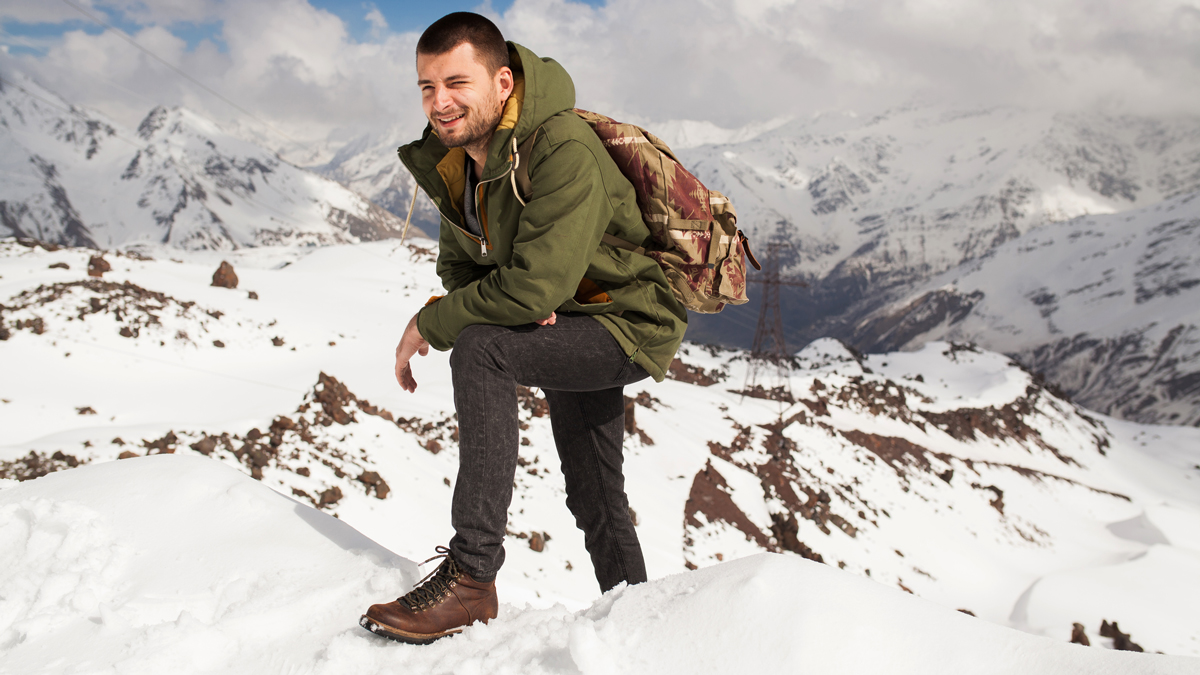Hiking is one of life’s great joys—fresh air, cell phones off, and nothing but nature as far as the eye can see can equal pure bliss. This being said, hiking can easily go awry if you aren’t prepared for the weather or terrain conditions that you encounter.
The following will explore some essential safety tips that you can keep in mind when you go hiking. These tips are specifically oriented towards hiking in snowy terrain as there are additional concerns having to do with ground visibility and keeping warm that don’t apply to balmy summer hikes.
Of course, every hiker has different levels of physical capacities and hiking experience. The first safety rule is always to listen to your instincts—if something feels unsafe, don’t do it. Trust your gut and admit to yourself when you’ve reached your limits.
1. Hunting Season Outerwear Rules
First and foremost, if you are hiking during hunting season, it’s important that you dress appropriately. Bright orange is the most common choice in this case. Hunters need to act fast to be successful in what they’re doing, and this means that the moment they see movement, they react and maybe have not taken the time to determine whether it’s an animal they are seeing or another person. Make sure to choose unnatural colors for your outerwear so that hunters can tell you’re not an animal.
2. Layers For Warmth And Dryness
When choosing clothing, you also want to be ready for changes in the temperature or moisture content. It’s usually best to have several warm layers that can be removed or added as needed making sure you’re not getting too cold (or too warm—sweat will freeze, and you’ll become cold very quickly).
You also want boots or hiking shoes that are waterproof as walking in the snow can lead to damp feet, which can result in you becoming dangerously cold very fast. When choosing boots, there are rougher soled options if you would like to have a better grip on icy surfaces—there are even additional accessories you can get for hiking shoes called microspikes that allow you to get a much firmer grasp on frozen ground.
It is especially important that you find a nice warm hat that you can wear on the hike. Experts at gearuphiking.com/ emphasize that heat escapes our bodies very quickly out the top of our heads. A hat can help mitigate that.
3. Bring A First Aid Kit
Hopefully, you won’t need to use the first aid kit, but you don’t want to be in need and not have one. There are lightweight kits available on the market, or you can mix and match your own items to make sure that you have your basic first aid needs covered. When packing your kit, take a moment to read up on the symptoms of hypothermia, so you can be ready to pick up on any subtle cues from your own body or your hiking companions. You’ll want to include an emergency blanket, a flare, and bear spray if you’re heading into an area where bears live. Don’t expect bears to be hibernating just because it’s winter—they can be, but they have been known to have fluctuating schedules.
4. Compass And Map
Even if you know the trail, you’ll want to bring a compass and a map. It’s easy to get a little sidetracked when in the great outdoors, and a map and compass can help you out if this happens to you.
5. Check The Weather Before You Go
This step is another crucial one. You don’t want to be caught out in the middle of nowhere in a blizzard, unable to see your way back. Always look up the weather before you plan a hiking trip, and make sure that you adjust your plans to suit the types of weather you’re comfortable with.
6. Avoid Ice And Perfectly Flat Surfaces
When you’re hiking, and everything is covered in snow, it can be hard to know where ice is located and where solid ground is. If you are unsure whether ice is safe to be walked on, avoid it. A good rule of thumb is to avoid perfectly flat planes of snow, as often this indicates the location of a pond or other body of water that has snow lying atop the layer of ice on the surface.
The above tips should get you ready for a nice snowy hike. Of course, you should always be prepared to turn around if the weather or terrain becomes too much for you. It is important that no matter where you’re going or for how long, you tell at least one person your plans.

